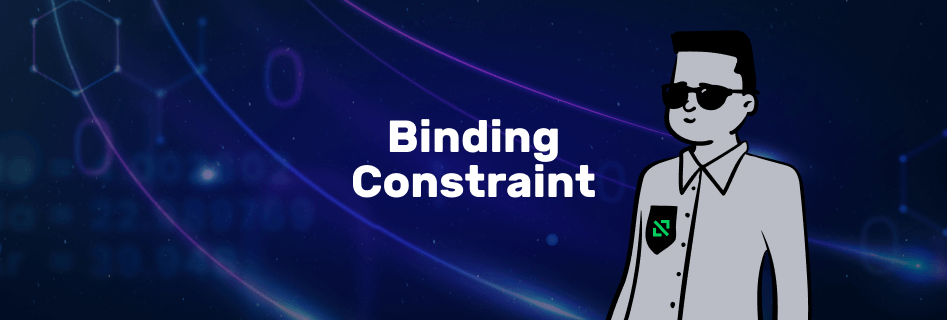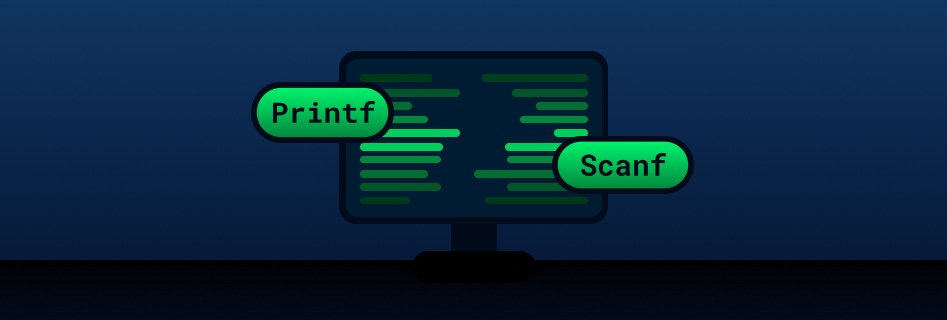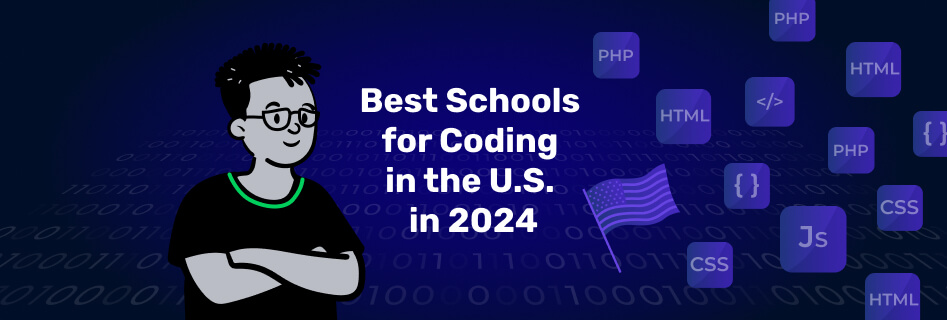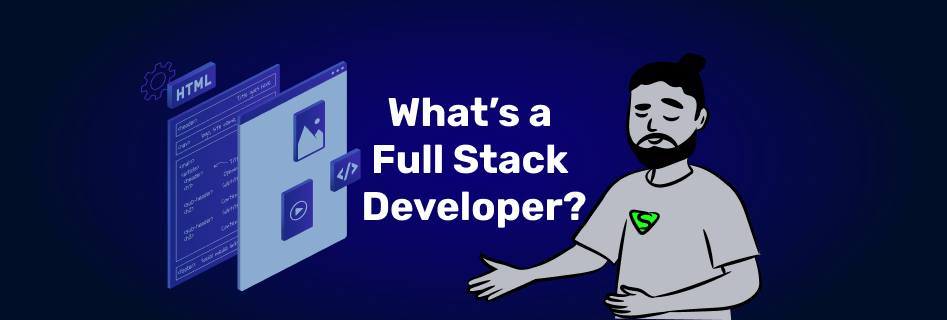
What’s a Full Stack Developer?
If you’re considering learning to code and beginning a career in software engineering, it is likely that you have already come across the phrase ‘full-stack developer.’ This position is frequently regarded as the highest point of professional growth in the field of engineering.
Whether you intend to apply for positions with this title or not, understanding the meaning of full stack developer and what they do is crucial for navigating the engineering world effectively.
In this article, we’ll define full stack developer term, go in-depth into what they do on a daily basis, and explain how to become one to help you decide if this particular career path is right for you. So, let’s dive in!
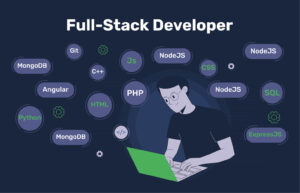
What does full stack mean?
Full stack means end-to-end application development. It encompasses the entire circle of creating applications or websites, involving both the front-end and back-end. The front-end typically serves as the user interface and provides clients with an interactive, user-friendly experience. The back-end, on the contrary, serves as the application’s foundation, featuring all the essential business logic and functionality. Consequently, a full stack developer means a person who understands how everything works behind the scenes and can build both the front-end and back-end of the app or website, handling everything from project management to installing the proper operating system on a server.
What does a full stack developer need to know?
Typically, a full stack developer begins their journey in the field by learning the fundamental coding principles, primarily focusing on the front-end aspects of website development. For instance, they delve into the basics of HTML, CSS, and JavaScript to gain a solid foundation. As their expertise in front-end best practices progresses, they go on to become proficient in a specific programming language for working with the back-end.
While a full stack developer certainly possesses the capability to code all components of an entire website, their versatility often leads them to contribute to a wide range of projects in a much broader capacity. This may involve collaborating with front-end and back-end developers to optimize data processing methods or enhance visual design elements.
What does a full stack developer do?
Some of the duties of a full stack developer include the following:
- Accounting for maintenance, scalability, and security when building apps and websites.
- Collaborating with front-end and back-end developers, as well as other software developers.
- Guiding complex elements of the development process.
- Creating databases and servers for the back-end.
- Informing corporate leaders about the efficiency of various technologies.
- Testing and maintaining the responsive designs of applications.
- Application Programming Interface (API) development.
- Collaborating with graphic designers to enhance user interface components.
- Ensuring optimization and cross-platform compatibility.
- Creating clear, error-free code for both front-end and back-end applications.
- Software debugging.
Now that you know who a full stack developer is and what they do, let’s move on to the steps you need to take to acquire the necessary knowledge and become a qualified expert.
How to become full stack developer?
Depending on one’s individual preferences and aspirations, becoming full stack developer offers multiple pathways to pursue. One common path involves obtaining a degree in Computer Engineering, Information Technology (IT), or Computer Science. This formal education equips aspiring developers with a comprehensive understanding of the core concepts and principles essential to succeed in this field. The other option is to take part in coding camps, attend full stack developer courses such as Udemy’s Advanced Web Developer Bootcamp, Udacity’s Full Stack Web Developer course, or Coursera’s IBM Full Stack Software Developer Professional Certificate, or even engage in self-study.
Regardless of the chosen route, there are some essential steps that one has to take to acquire the knowledge necessary for working as a full-stack developer. These steps are as follows:
1. Gain hands-on experience with the fundamental programming languages
Learning HTML and CSS is the first step for the majority of careers in application or web development. Becoming proficient in these and related languages lays a solid foundation for more interactive and complex languages like JavaScript.
Knowledge of the below front-end languages can enhance your understanding of diverse concepts and patterns that will prove invaluable throughout your career journey:
- HTML. It is the internet’s underlying technology that controls a website’s or application’s content and organizational structure. HTML5 is the latest version, but most popular browsers also support pages with older versions of HTML.
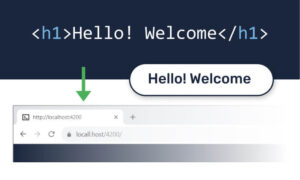
- Cascading Style Sheets (CSS). This programming language manages how the HTML code on the website appears to users, including the colors, background pictures, page layout, and fonts. The most recent version, CSS3, provides fundamental animation and interactivity features.
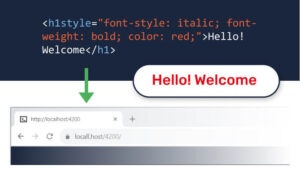
- JavaScript. It works on both the front-end and back-end and enables the insertion of custom animations and improved interactivity, enhancing a site’s usability and aesthetic appeal.
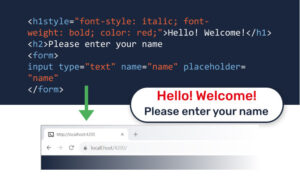
2. Become familiar with development frameworks and third-party libraries
Beyond the aesthetics and layout provided by the basic programming languages, the responsibilities of a full-stack back-end developer also include knowing how frameworks and libraries call code. Therefore, in addition to the languages mentioned above, one of the full stack developer requirements includes a deep understanding of the following:
- jQuery, a JavaScript library that simplifies document traversal, HTML animation, and event handling.
- AngularJS, which aids web developers in the creation of web applications.
- ReactJS, which is used by programmers to design user-friendly application interfaces.
3. Learn back-end languages
Back-end development deals with data processes instead of simply concentrating on the user experience. Even if you have the option to learn numerous languages, starting with one can help you become an expert and qualify you for jobs that require that specific coding language.
Some back-end languages used frequently in the fields of web and application development include the following:
- Java, which is a high-level programming language with few implementation dependencies.
- Hypertext Preprocessor (PHP). This server-side scripting language makes the material of websites and apps visible to users by requesting it from servers or databases.
- Ruby. This dynamic open-source language prioritizes efficiency and simplicity. It offers a more user-friendly syntax that is simpler to create and comprehend.
- Python. This object-oriented programming language enables developers to build objects for use in websites and applications and to give those objects specific attributes and abilities.
4. Understand how databases and cashing work
All applications and websites you will ever work on require a database to store the data they use. That’s why having a thorough understanding of the many databases accessible, including SQLite and MongoDB, might benefit you and your career in the long run.
As every database has a different application and set of benefits, the database you will have to use will greatly depend on the project you will be working on. For instance, while file-based database management is implemented in both databases, SQLite is serverless, and MongoDB is server-based. You can get acquainted with differences like these by fulfilling database projects with a mentor or on your own.
5. Acquire fundamental knowledge of design
Although most full-stack developers don’t create their own websites or applications, having a basic understanding of design can still be helpful. Comprehending the relationship between the work you do as a developer and the appearance and functionality of the final product will help you create more appealing websites and applications.
Last but not least, a qualified expert has to possess some basic soft skills. These full stack developer skills include creativity, strategic planning, analytical, problem-solving, and perfect time management skills to meet deadlines while ensuring proper execution of tasks at hand.
How to get a job as a full stack developer
There has never been a better time to become a full stack developer than now, but you might find yourself on the edge, wondering how to get into the industry. If that is your case, then these simple steps might come in handy:
- Establish a business network
Connect with any friends or coworkers who are web developers and ask them about their daily routine, including the difficulties they face. Inquire about the software they utilize and industry trends. - Find an online developer community
This type of interaction is possible on almost all social media websites, and it’s a valuable method to discover new industries, businesses, and opportunities. - Schedule interviews
If you don’t know anyone who works in web development, check out local professional societies to see if you can set up informative interviews with people who hold the position you seek. - Attend conferences or join a professional organization
Attending conferences is a fantastic way to broaden your social network and discover job opportunities. There you can meet people who one day might be able to hire you.
Remember, with the right skill set, proper knowledge of full stack developer languages, and professional connections, a career in full stack development may be extremely rewarding. There are many opportunities for promotion in addition to a growing number of online and offline job options worldwide. And should you get stuck on any of the web development concepts at any moment of your journey, you can always count on programming assignment help from our dedicated team. We partner with America’s top experts in HTML, CSS, JavaScript, and dozens of other programming languages to address any issues you might possibly face quickly and efficiently, 24/7!

